
(11 July 2006) Here is a photo of a local Chris Langan set, which i'm using as my model for this project. (Many thanks to Julia M. for letting me take all the photos and measurements of her pipes.) This project won't end up being an exact copy of these drones, but most of the design and acoustics will be based on this set.
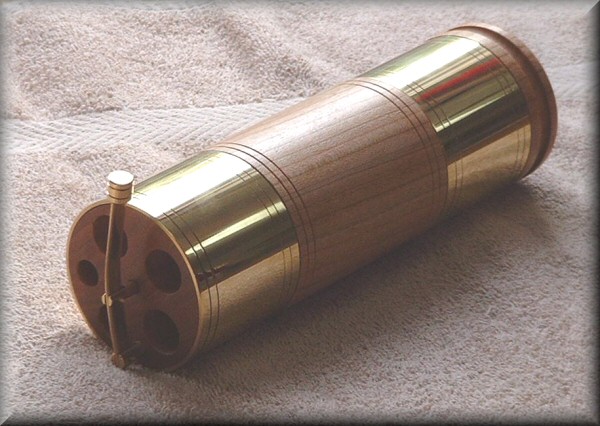
The mainstock is done. It's made of cherry, with brass metalwork. The drone switch shaft runs in a close-fitting brass tube, and is coated with high vacuum grease, which is kind of an anti-lubricant - it's stiff and smooth at the same time, giving the switch a nice feel.


Here is most of the metalwork for the drones, along with the imitation ivory bells. The shapes are close copies of the Chris Langan set. None of these are polished yet.
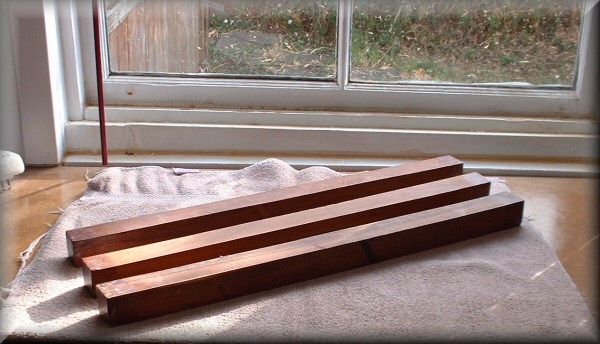
The drones will be made of mopane, a wonderfully hard and dense African wood. Hopefully it will be a decent colour match for the existing chanter.

(31 July) Here are the first couple of drone sections, ready for polishing. This is the tenor sliding joint, and the baritone standing joint.
This is the first time i've used mopane, and BOY HOWDY is it lovely stuff to work with. Mmm. I can't wait to see how it polishes out.

(10 Aug) More progress.
The second pipe on the stand is the bass drone loop-back section. I decided to do this section in wood since i had just enough wood to do it. The Chris Langan pipes have a plain brass loop-back, but i think a wooden one looks classier.
Still to come are the two long sections of the bass drone, and the baritone drone sliding joint. The L&M pipebag has arrived, and sitting on it are the mainstock and the plugs for the regulator holes.
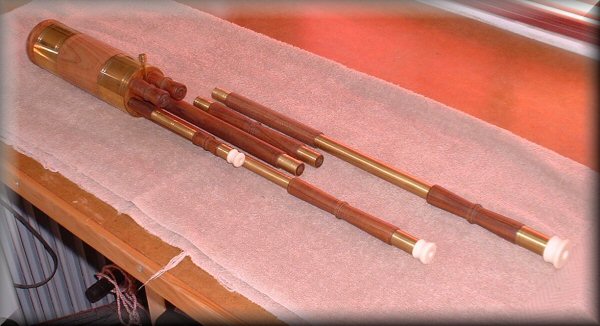
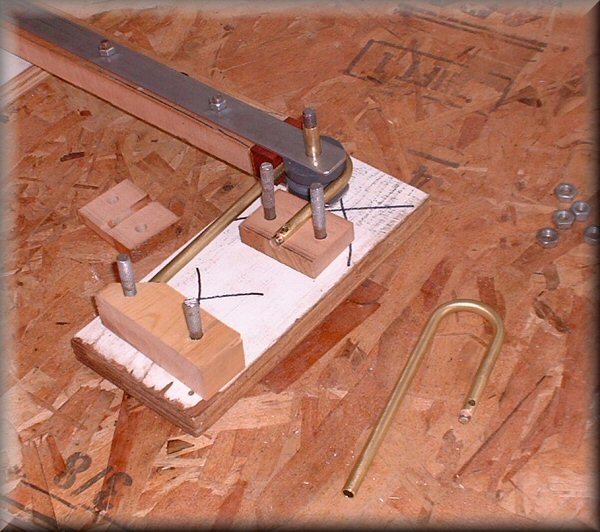
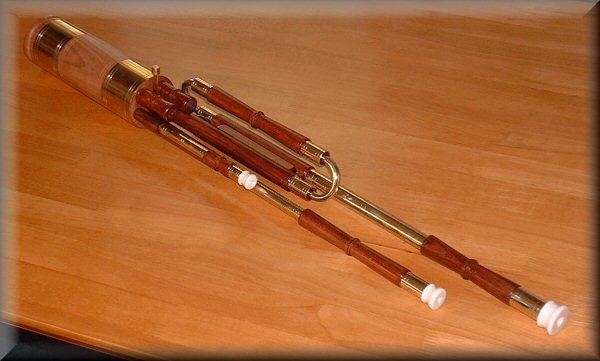
(27 Aug) And here we are ready for tying in and reedmaking! This is really starting to look like something.
(16 Sept) I don't have any more photos, but the reeds got made, and the drones got tied into a new bag and are happily buzzing away with their new owner. They're well behaved with composite reeds, and the tone turned out to be quite nice. Bold, but not overpowering, with a nice balance so you can really hear each drone. All in all, i'm thrilled with how these turned out - i wish i'd had these drones when i was starting!
Many thanks to Bryan H, Julia M, and of course, Chris Langan.